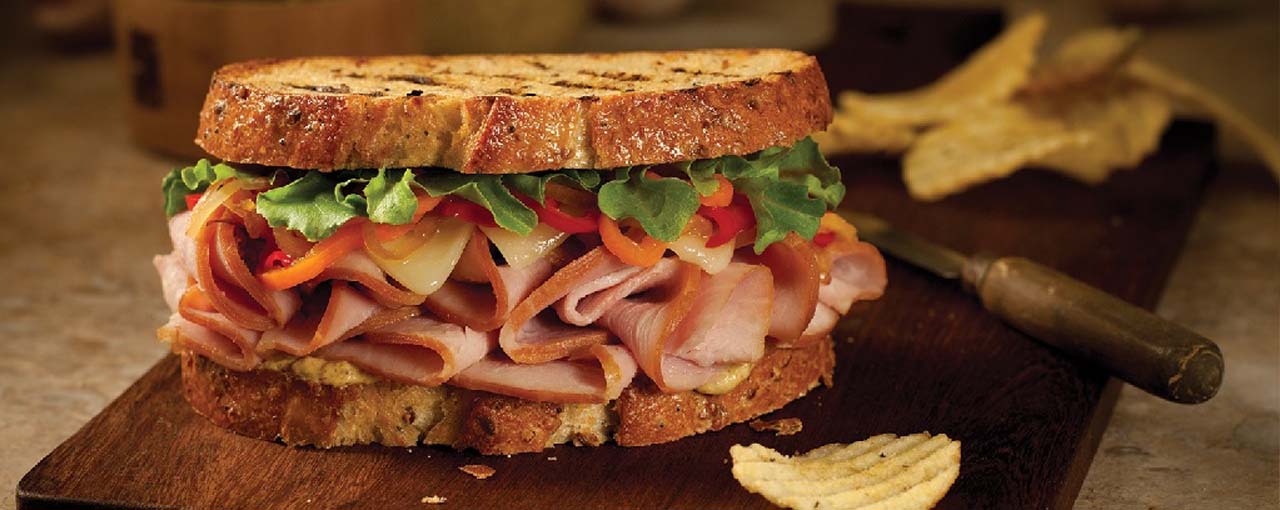Discover exclusive protein industry insights in our latest report
Cargill’s 2024 "The Protein Profile" from the North American Protein team shares a comprehensive look at the biggest trends and predictions in protein for 2024 and beyond. We dove deep into consumer mindsets, desires and behaviors, along with the latest in culinary technology, and filtered it all through the lens of protein.
This wide-ranging report combines Cargill’s proprietary research with insights from trusted sources. The result is a broad review of four macrotrends — with implications for brands, foodservice and retail.

What you need to know about protein in 2024, and beyond
1. Less is More
The average household size is shrinking, changing the ways we shop, cook and store food. Today, 64% of U.S. households are one or two people, up from 46% in 19701. While some one- or two-person households want smaller packages of protein to avoid unnecessary food waste and control overall costs, others purchase larger quantities and freeze for later use. In fact, 86% of shoppers sift through different meat packages to find the perfect price and size.2
For smaller households, preheating and using an entire oven can feel like overkill for what recipes are calling for. Appliances like air fryers and pressure cookers are game-changers for quick, smaller-sized meals, especially for preparing protein.
2. Simplify My Life
The time crunch continues to be real, and more people are reaching for protein and meal solutions that simplify their lives. For example, heat-and-eat meals have increased, representing 1-in-7 (15%) of all meal occasions today.3 And online shopping is here to stay, with 63% of all shoppers ordering groceries online at least occasionally.6
In the world of foodservice, digital ordering has become an expectation for patrons, especially for younger demographics like Gen Z. Digital orders for foodservice have increased by 5 billion orders since 2019 — a 161% increase.4

3. Connecting Cultures and Cuisines
Multicultural consumer segments are growing, driving interest in globally inspired foods and flavors. As the most diverse generation yet, Gen Z shows a clear preference for multicultural dishes. For the first time, Gen Z says Mexican and Chinese cuisines are best, displacing American cuisine as the favorite.5
As younger generations increase their share of wallet, retailers will seek more placement opportunities for globally inspired proteins. For instance, 48% of Millennials and 58% of Gen Z consumers have eaten globally inspired food in the past week.5
Culinary chefs are leading this trend by creating new food experiences and expanding menus in bold new ways, leading to trends like “chaos cooking” and “flavor tourism.” Download the report to see a recipe showcasing this cultural phenomenon.
Weeknight dinners are drawing inspiration from all over the world: from layering spices and chilis together to choosing different marinades and combinations. For brands and retailers, attracting and connecting with multicultural shoppers has never been more important.
4. Redefining Value
Because defining value is so personal, food behaviors are shifting at both ends of the cost continuum. Up to 60% of consumers say they’re eating out less often to manage expenses.6 Some of them try to recreate those restaurant meals at home, often using premium ingredients, while others choose deli-prepared items as a substitute. We’re also seeing increased interest in club stores and private label brands, with private label preference up by 60% since 2021.2
Other consumers prioritize value by choosing simpler meals or smaller sizes while dining. In foodservice, 71% of consumers would like the option of a smaller portion size at a smaller price.7
[1] Statista/U.S. Census Bureau
[2] FMI, “The Power of Meat”
[3] Circana/NPD, “Eating Patterns in America,” 2023
[4] Circana, CREST®, YE March 2023
[5] Cargill Proprietary Research
[6] FMI, “U.S. Grocery Shopper Trends Tracker,” July 2023
[7] National Restaurant Association, “State of the Restaurant Industry,” 2023
